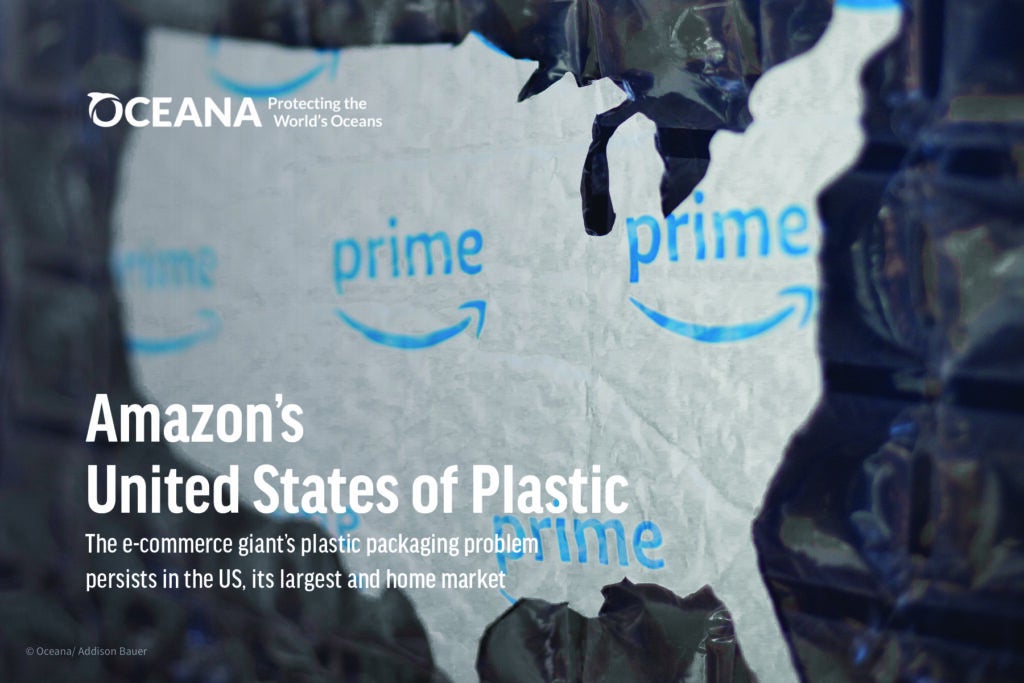Report | April, 2024
Amazon’s United States of Plastic
Oceana analyzed e-commerce packaging data to estimate the amount of plastic packaging waste generated by Amazon in the United States – it’s largest and home market.
According to Oceana’s new report, Amazon generated 208 million pounds of plastic packaging waste for all transactions in the United States in 2022, a 9.6% increase over Oceana’s estimate for 2021. This amount of plastic, in the form of air pillows, would circle the Earth more than 200 times.
Oceana calculated the amount of plastic packaging waste generated by Amazon in the U.S. based on available market data, making adjustments informed by recent public communications from the company about changes in its plastic packaging use. For the years 2021 and 2022, Amazon disclosed part of its global plastic packaging footprint but has neither reported its plastic use at the country level, nor for all transactions including those fulfilled by third-party sellers.
Amazon has reduced plastic packaging in other major markets including India and Europe but has yet to commit to similar reductions in its largest market, the U.S., or globally.
Because the company refuses to phase out plastic packaging everywhere it operates, Oceana estimates that a large amount of plastic packaging continues to become marine plastic pollution. Using plastic waste pollution data from a peer-reviewed study published in the journal Science in 2020, Oceana estimates that up to 22 million pounds of Amazon’s global plastic packaging waste from 2022 will end up in the world’s waterways and seas.
Plastic pollution, including the type of plastic used in Amazon’s packaging, is devastating the world’s oceans. Amazon’s plastic packaging is made from the most common form of marine plastic litter in nearshore ocean areas — plastic film — which is also the deadliest type of plastic to large marine animals.
Oceana is calling on Amazon to phase out plastic packaging in its largest market — the United States — and make a company-wide commitment to reduce the total amount of plastic packaging it uses by at least one-third by 2030.
Media contacts:
Gillian Spolarich | gspolarich@oceana.org
Anna Baxter | abaxter@oceana.org




